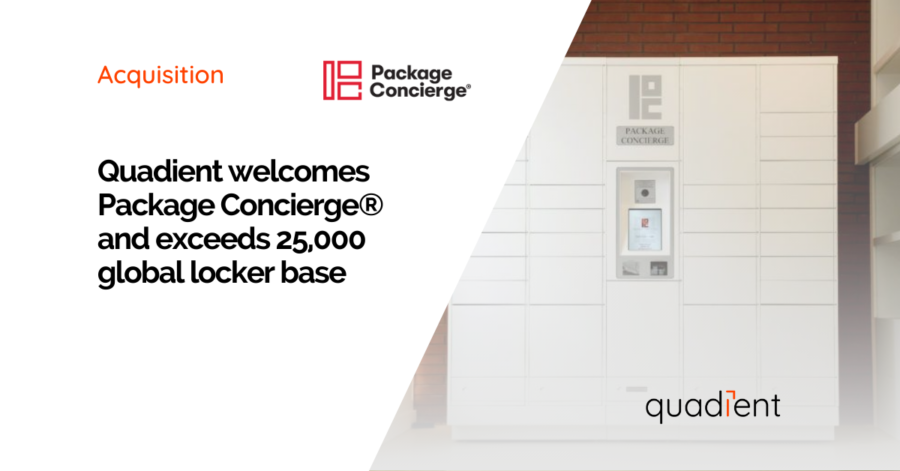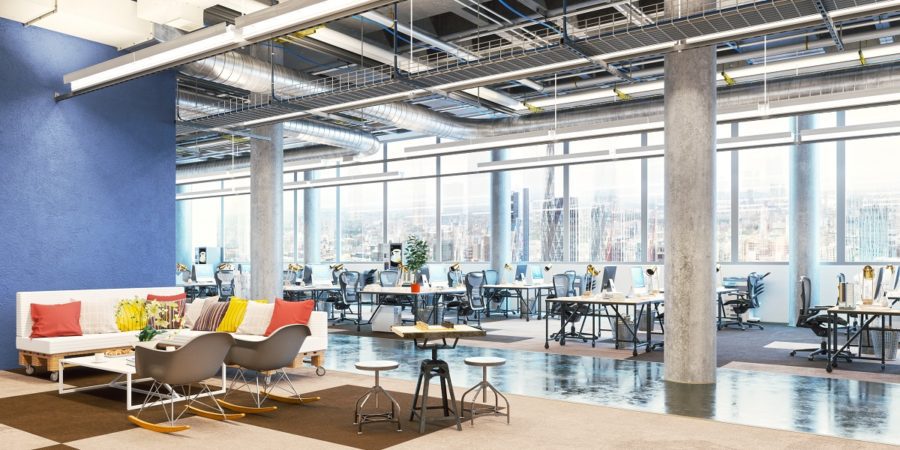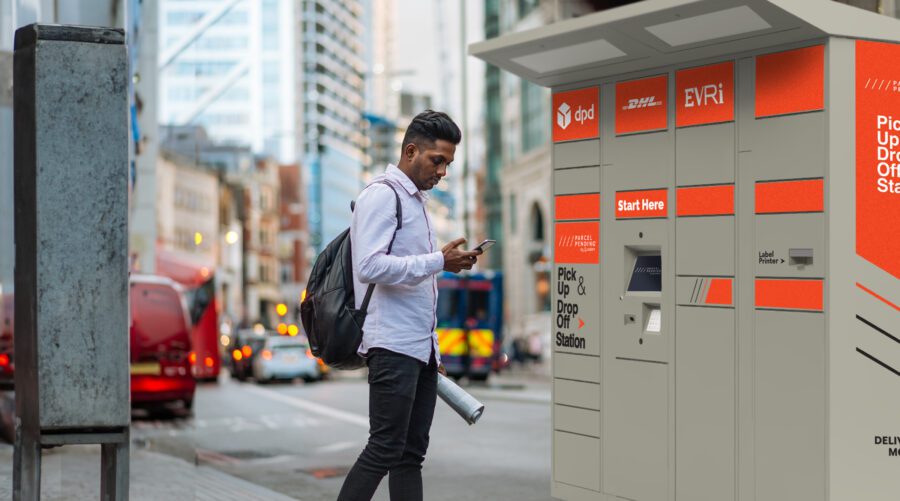
Commercial
Top 10 Innovative Office Technology Trends
Written by: Power Digital
6 Min Read
Published: January 14, 2022
Updated: December 4, 2023
Have you heard? The “return to the office” conversation is coming back. And, yet as employers attempt a return to in-person work, they’re facing a barrage of new obstacles.
The Permanence of Remote Work
Early thinking during the start of the pandemic in March of 2020 was that a full return to the office was just a matter of “defeating the virus.” With COVID-19 evolving into an endemic issue, remote and hybrid workplaces are now a staple. Gartner estimates that more than 1.1 billion people around the world were remote workers last year, up from 350 million in 2019.1
Staggering new research shows that remote work isn’t just a “nice to have, ” but a condition of employment. Employee expectations have shifted, causing companies to shift. 40% of Americans surveyed who were working at home said they would look for another job if their employer forced them to return to the office full-time.2
If you’re looking to help your employees safely return to the office space, here are 10 innovative office technology trends and innovative office solutions to consider in order to create a modern workplace that is more welcoming, productive, and collaborative.
#1 Scheduling Software
Whereas the technology of yesteryear were founded upon ensuring there were enough workplaces/space for employees, today’s software and productivity challenge is to ensure that the right amount of people are in the office at one time while also fostering community, collaboration, productivity, and creativity. As Leena Nair, Chief Human Resources Officer at Unilever PLC explains: “The goal is to make offices more like a destination”.3 For instance, Unilever has created specific days when multiple teams can gather in the office at the same time. Accenture, too, is implementing new technology in the workplace that allows employees to easily find their colleagues – even on different floors.
#2 Cloud Computing
Most of us have recognized the power of cloud technology solutions – storing information not on our local devices but as an accessible and safe place for an entire company. Cloud computing solutions can transform the modern workplace’s “work from anywhere” aspiration into a viable reality.
#3 Electronic Visitors Log
It’s time to kick your old-fashioned visitors ‘ log to the curb. In today’s technological race to make everyday tasks easier and faster, a new, innovative solution has arrived. Boasting modern touchscreens, the new software allows for automatic identity confirmation, floor directory assistance, and real-time views as to who is in the office.
#4 Smart Lockers
Without permanently assigned desks or cubicles, there’s a need for smart office features that provide the ability to safely and securely transfer documents, badges, laptops, and other physical resources within a work environment. Leveraging smart lockers as a distribution system works; employees can retrieve items within 10 seconds at the locker kiosk or contact-free using a unique barcode from their mobile phone. “Everyone wants to control their personal effects,” explains Jeffrey Gay, an architect and designer for MOI.4 “With the open office colliding with the hybrid workplace, you don’t always know who is in the space. You want to know that your things are safely locked away”.
#5 Solutions Powered by Artificial Intelligence
Although configured early on as safety precautions monitoring social distancing, the number of riders in an elevator, or temperature screening, today, artificial intelligence technology solutions are being used for thousands of other applications. As Adam Stanley, Chief Information Officer and Chief Digital Officer at commercial-real-estate-services giant Cushman & Wakefield PLC, is quoted as saying: “I think AI will help buildings get better with traffic management,” and “It’s no longer just nice to have.”
Deloitte, too, sees AI as an important innovation and key to making sense of HR. From detecting employment trends to gauging employee satisfaction to understanding the financial impact of programs, these algorithms leverage technology to help managers make better decisions.
#6 Climate, Lighting, & Air Controls
Say goodbye to one employee shivering while the other one is sweating. Smart thermostats and related innovative office solutions can sense how many people are in the room, the time of day, and the outside temperature to regulate the heat/cold. Smart lighting technology can help an office building conserve energy by using motion sensors to power off lights after a designated period of inactivity.
Monitoring air quality is also key. Metrikus highlights this point: “A recent study suggested that enhancing indoor air quality could be as effective in reducing aerosol transmission of viruses as vaccinating 50-60% of the population”.5,6
#7 IoT-Powered Technology
The Internet of Things (IoT) describes the network of physical objects – “things – that are embedded with sensors, software, and other technologies for the purpose of connecting and exchanging data with other devices and systems over the Internet. In fact, the number of IoT-connected devices is expected to skyrocket to over 75 billion by 2025.7 You’ll soon see how IoT sensors work to lower heating, lighting, and air conditioning bills, as predictive software can alert facility managers of sharp shifts in usage. Even more fascinating, this technology can also monitor office supply usage and alert managers as to when it’s time to reorder.
#8 Automated Tasks
Automation is an innovation that can help improve efficiency for modern office systems. A Harvard Business Review study estimates that 65% of the tasks that a manager currently does have the potential to be automated by 2025.8 Similar to Deloitte, HBR sees the HR function as being in dire need of innovative office technology and automation to manage performance reviews and peer assessments.
#9 Smart Glass
If you’re asking, “what is smart glass?” you are not alone. Smart glass is a new and cool technology that alters its color based on time of day, sun exposure, cloud coverage, and light. This new glass is designed to save energy, but experts predict it could eventually work as an interactive display (think Tom Cruise in Minority Report).
#10 Voice Recognition
If you’re using Siri or talking to your remote control, you recognize the power of voice recognition. As we’ve all learned, we speak faster than we type, resulting in improved efficiency. The modern office is embracing this technology — using it to send emails, schedule meetings, and more.
The workspace and office are evolving to meet the demands of the new workforce. Now’s the time to leverage technology, retail lockers, and smart lockers to become an employer of choice.
Ready to discover how smart lockers and parcel locker solutions can be an affordable, innovative solution for your office building? Contact a Parcel Pending by Quadient representative today.
Sources:
- Loten, Angus. The Wall Street Journal. AI Set to Reshape Workplace as Physical Offices Open Up. (2021, March 31). https://www.wsj.com/articles/ai-set-to-reshape-workplace-as-physical-offices-open-up-11617224774/
- Cutter, Chip. The Wall Street Journal. The Boss Wants You Back in the Office. Like, Now. (2021, July 24). https://www.wsj.com/articles/return-to-work-the-boss-wants-you-back-in-the-office-11627079616
- Cutter, Chip. The Wall Street Journal. After Covid Closures, a New Quest to Make Offices Less Awful. (2021, December 9). https://www.wsj.com/articles/after-covid-closures-a-new-quest-to-make-offices-less-awful-11639045809
- Proctor, Carolyn M. Washington Business Journal. Post-Covid offices are bringing in welcome design changes. (2021, July 16). https://www.bizjournals.com/washington/news/2021/07/16/post-covid-office-design-changes.html
- Vernon, Emily. Metrikus. Back to basics: what does a smart office actually look like?. (2020, January 11). https://www.metrikus.io/blog/what-does-a-smart-office-look-like
- Spena A., Palombi L., Corcione M., Carestia M., Spena V. On the Optimal Indoor Air Conditions for SARS-CoV-2 Inactivation. An Enthalpy-Based Approach. [(accessed on 7 December 2021)]; Available online: https://www.ncbi.nlm.nih.gov/pmc/articles/PMC7504028/
- Statista. Internet of Things (IoT) connected devices installed base worldwide from 2015 to 2025 (in billions). (2016, November 27). https://www.statista.com/statistics/471264/iot-number-of-connected-devices-worldwide/
- Kropp, Brian & McRae, Emily Rose. Harvard Business Review. 11 Trends that Will Shape Work in 2022 and Beyond. (2022, January 13). https://hbr.org/2022/01/11-trends-that-will-shape-work-in-2022-and-beyond





